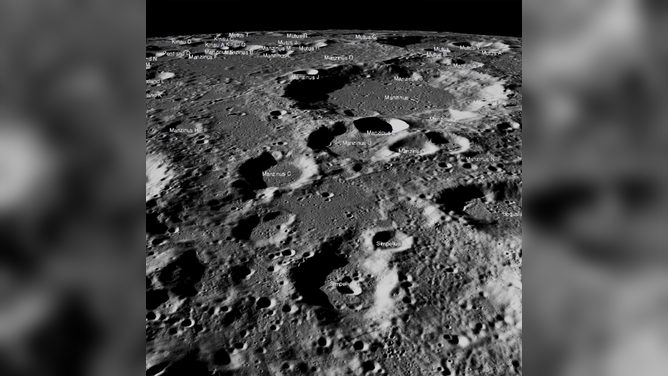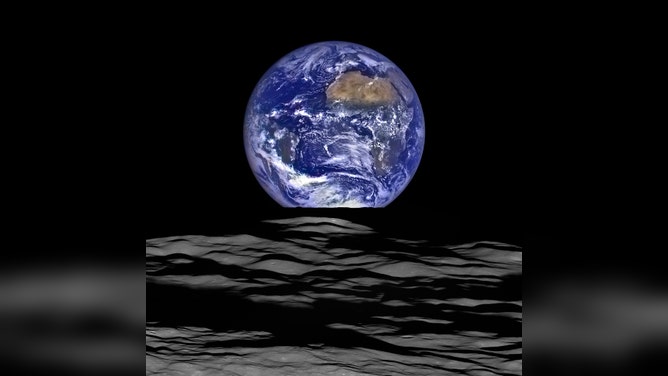When NASA intentionally crashed a rocket into the moon
In 2009, NASA slammed a rocket onto our lunar satellite to find an answer to an age-old question.
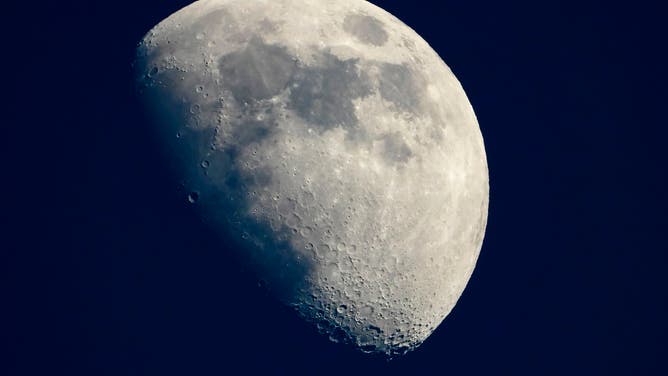
Data about the moon is still being transmitted back to Earth from the Lunar Reconnaissance Orbiter launched in 2009.
(Laurent Emmanuel / AFP / Getty Images)
Does water exist on the moon?
The answer to such a seemingly simple question would have serious ramifications.
It would mean that water, a resource humans can’t live without, would be readily available for space explorers. It would also mean that hydrogen, part of water’s molecular makeup, could be used to create fuel for space missions.
In short, the presence of water meant that the moon would serve as an even greater stepping stone in our pursuit of space exploration.
NASA set out to answer that all-important question — and did so quite dramatically.
Ready for liftoff
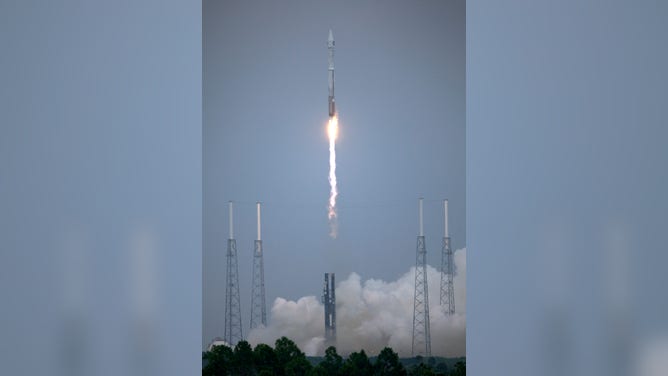
The Lunar Reconnaissance Orbiter, onboard an Atlas V rocket, lifts off June 18, 2009 at Cape Canaveral, Florida.
(Bill Ingalls / NASA / Getty Images)
June 18, 2009, was a cloudy day in Cape Canaveral, Florida. But the weather conditions were still right for NASA’s water-finding mission.
The mission included two spacecraft: the Lunar Reconnaissance Orbiter (LRO) and the Lunar Crater Observation and Sensing Satellite (LCROSS). By working together, LRO and LCROSS were to gather information about the moon.
LRO’s part of the mission was to survey the moon’s entire surface, map its north and south poles and try to find signs of water. LCROSS’s part was to "further explore the presence of water ice in permanently shaded areas of the Moon’s polar regions," according to NASA.
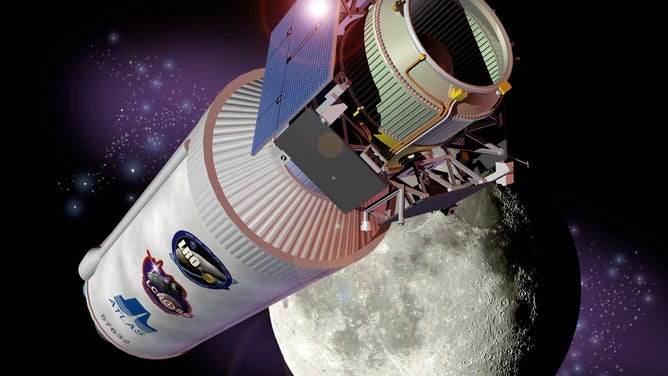
NASA's Lunar Reconnaissance Orbiter, or LRO, is shown in this undated artist's rendering released by the space agency on Thursday, June 18, 2009.
(Bloomberg / Getty Images)
However, LCROSS also had a more aggressive component to its role: The rocket used to transport LCROSS to the moon was set to sacrifice itself by intentionally crashing onto the lunar surface.
All for the sake of science.
LEARN: HOW ROCKETS ARE STILL CRASHED INTO THE MOON FOR SCIENCE
The polar side of the moon
LRO reached the moon on June 23, 2009, about four-and-a-half days after launch. It entered a polar orbit around the moon, meaning that its circular path largely went over and under the lunar body.
LCROSS, which initially rode along with LRO, ended up taking a different path after launch. Rather than it entering the moon’s orbit, LCROSS was flung out, entering a polar orbit around the Earth.
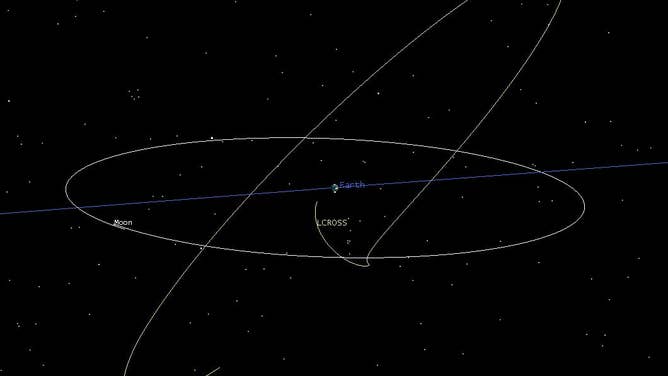
Graphic visualizations of the early part of the LCROSS orbit leading up to lunar swingby at Launch +5 days. The blue line represents the Earth's orbit around the sun. The white circle is the moon's orbit around the Earth. The yellow line is the orbit of the LCROSS spacecraft. The intersection of the yellow line with the moon's orbit represents the Launch +5 days lunar swingby.
(NASA / Ames Research Center)
Over the next few months, LCROSS and LRO played their parts independently, with LRO circling the moon and LCROSS circling the Earth. But their paths eventually crossed — for the most dramatic part of their mission — on Oct. 9, 2009.
Showtime
LCROSS, upon reaching the moon, released the now-empty rocket that had brought the satellite to space. The rocket flew down and crashed into a crater in the moon’s south pole, kicking up a cloud of debris.
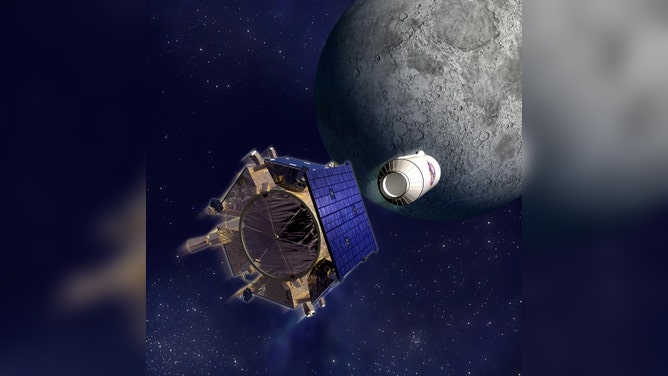
Artist's rendering of the LCROSS spacecraft and Centaur separation.
This cloud was what LCROSS traveled for nearly four months to study, but it only had about four minutes to do so before the debris in the cloud became exposed to sunlight and then vaporized. So, LCROSS had to race through the cloud’s soil, dust and other lunar material to get the data it needed.
The cameras it had on-board took images, and instruments on LCROSS recorded other types of data — all of which were streamed back to NASA scientists on Earth in real time.
But it didn’t end there.
LCROSS continued to fly closer and closer to the moon. Then, like the rocket LCROSS had sent to its doom, LCROSS too met its own end on the lunar surface.
Its death, however, was not for naught. It added lunar material to the debris cloud made by its crashed rocket, material that the lone surviving LRO was able to study.
The verdict
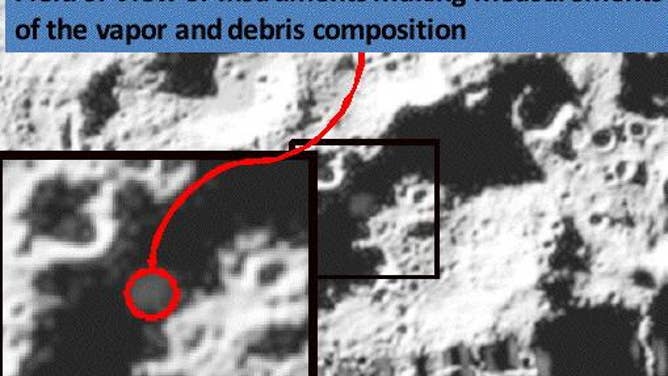
From the view of LCROSS's instruments, this is an image of the rocket hitting the moon's surface and ejecting a plume of dust into the air.
(NASA)
Because of the images and data sent back by LRO and LCROSS, scientists were able to learn more about the lunar surface.
For one thing, data from LRO alone allowed scientists to create the "most detailed topographic map covering more than 98% of the Moon’s surface."
Data from both LRO and LCROSS showed what was in the moon’s surface. Scientists found light metals like sodium, mercury and silver. Plus, they discovered that materials like methane, ammonia and hydrogen gas — ingredients for the production of fuel — were also bountiful in the lunar soil.
Finally, scientists were also able to find an answer to their question: Does water exist on the moon?
The answer: Yes, and lots of it.
According to NASA, "the data revealed that there is perhaps as much as hundreds of millions of tons of frozen water on the moon, enough to make it an effective oasis for future explorers."
